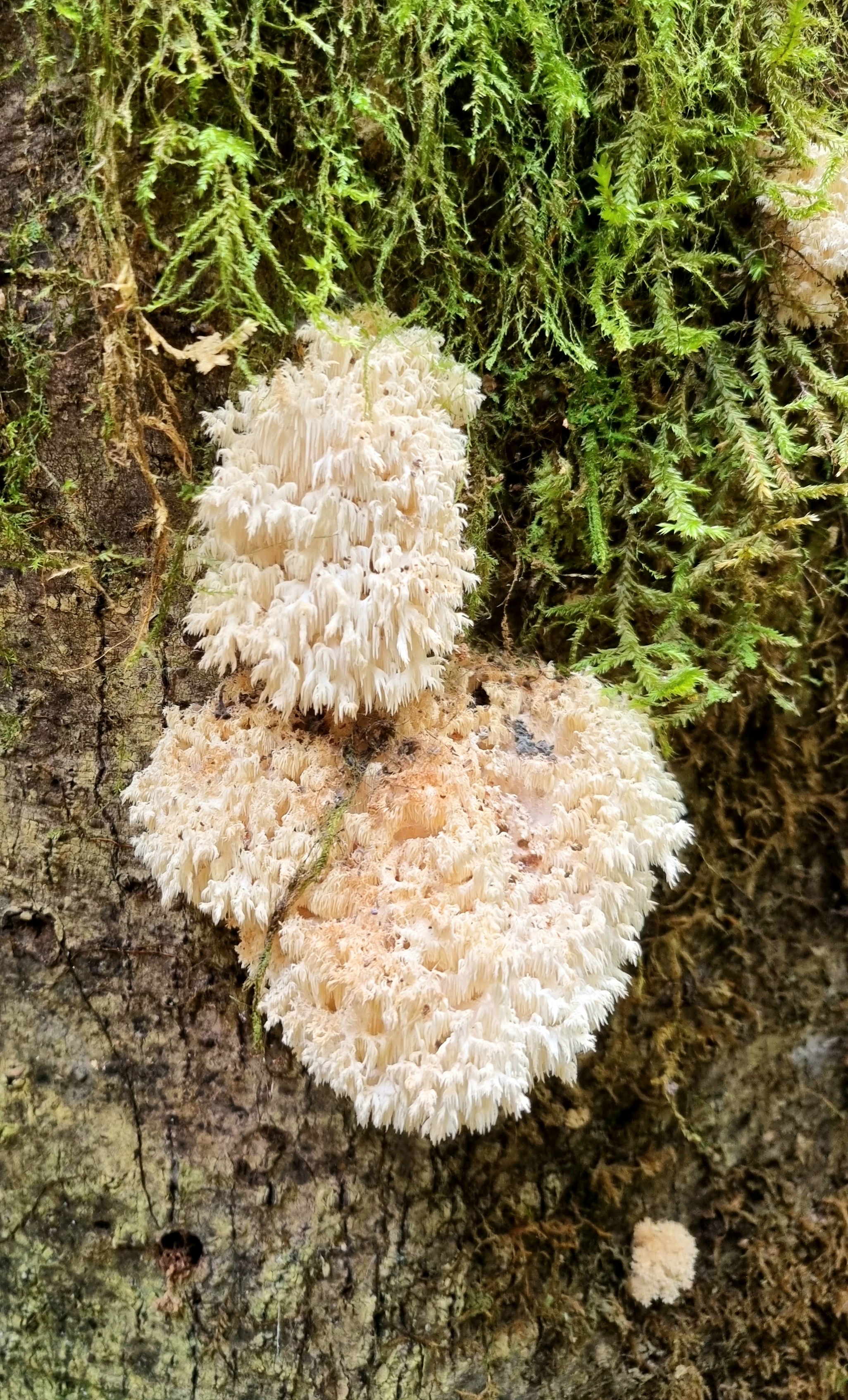A new species of medicinal mushroom in the genus Hericium was recently identified by a third-year microbiology and genetics student at Stellenbosch University (SU) – this is the first endemic species of this highly sought-after medicinal mushroom to be found in Southern Africa and only the second in Africa.
 Breyten van der Merwe, now a BScHonours student, found the specimen while out walking in the Knysna forests in January 2021. He collected a sample, dried it out and subsequently brought it to the attention of Prof. Karin Jacobs, a microbial ecologist and mycologist in the Department of Microbiology at SU.
Breyten van der Merwe, now a BScHonours student, found the specimen while out walking in the Knysna forests in January 2021. He collected a sample, dried it out and subsequently brought it to the attention of Prof. Karin Jacobs, a microbial ecologist and mycologist in the Department of Microbiology at SU.
Although a rare sight in nature, species in the Hericium genus are well known for their exceptional medicinal and health-promoting qualities. Hericium erinaceus, the Lions Mane mushroom, for example, has long been part of traditional Chinese and Asian medicine.
In South Africa, this “new" spectacular looking mushroom has mostly been misidentified as Coral Tooth mushroom (Hericium coralloides). According to Breyten, it is often only through DNA sequencing that the different species in this genus can be differentiated from each other.
The new endemic species is named Hericium ophelieae after the poem “Ophélie" by the French poet Arthur Rimbaud. This is because lines such as “long veils…a white phantom…beautiful as snow" seemed to be an apt description for the cascading fruiting bodies in the dark Knysna forest.
The other endemic species, and its closest relative, is Hericium bembedjaense from the Dja Biosphere Reserve in Cameroon.
These coral-like fungi play an important role in the breakdown of hardwoods and conifers. In the Knysna forest, for example, Hericium ophelieae was found only on hardwoods indigenous to the Knysna-Amatole forest, specifically Cape Beech, Cape Holly, Ironwood and Stinkwood trees.
Breyten, himself a keen forager, says while this is the first endemic species of Hericium to be described from southern Africa, it is certainly not the last: “There are likely others to be discovered, as mycology as a discipline is still underdeveloped in Africa and southern Africa. This finding certainly highlights the need for further research into the fungal diversity of the Afrotemperate forests of South Africa," he concludes.
For his BScHons degree, Breyten will now further investigate and analyse the compounds found in this species of Hericium – as it is so clearly distinct from other species in this genus, there may just be a few more novel findings on its way.
Prof. Jacobs says the paper highlights the value of the amateur mycology community: “In South Africa, collaboration between universities and amateur mycologists can increase the number of novel species described from South Africa's many different biomes".
The article Hericium ophelieae sp. nov., a novel species of Hericium (Basidiomycota: Russulales, Hericiaceae) from the Southern Afrotemperate forests of South Africa" was published in the international journal Mycology recently.
On the photo, the newly described Hericium ophelieae from the Knysna forest. Image: Peter Herrmann

